dYdX Trader Insights #1: Dephi Alpha
After a two-year bear market for nearly every crypto asset outside of Bitcoin, assets powering decentralized finance protocols have drastically outperformed the market. What first started as a number of financial engineering experiments, has quickly developed into an emerging crypto asset class. It seems as if DeFi is finally starting to eat parts of CeFi.
Apart from Bitcoin’s increased use as a digital store of value, decentralized finance has been the primary innovation hub within the crypto ecosystem. Everything from borrowing and lending, exchanging assets, and trading derivatives is being built on top of a decentralized architecture. And unlike many of their crypto predecessors, DeFi protocols are growing rapidly. Decentralized exchanges, which includes dYdX, processed over 1700% more volume in May 2020 than they did in January 2019. Lending protocols currently store hundreds of millions in assets and have supported billions in on-chain originations as well as millions in interest yield. Lastly, derivatives are enabling crypto traders with much more novel and secure ways of getting leverage
(source: Dune Analytics)
Many of these networks are powered by tokens that are designed to accrue value as usage grows — the chief driver being fees. This means that valuation can actually be grounded in fundamentals as there are cash flows connected to that token, a refreshing feature relative to other crypto assets.
To capture alpha in the DeFi space, a new style of investing has been created which combines both fundamental research and activist investing. Outlined by Arthur Cheong, DeFi investors work to identify market mispricings and then once they’ve made an investment, they directly work for the protocol, helping grow awareness and liquidity.
The mispricing usually stems from a few factors:
- A protocol level change to the token economics
- Real traction that the market hasn’t picked up on
- Lack of liquidity
DeFi investors have a number of ways to assess valuation. Companies like Token Terminal allow investors to run comparative analysis of networks based on the fees they generate. Oftentimes, some network valuations are priced much cheaper than their more widely known counterparts, even though the smaller network sees more usage. Another key element in fundamental research is finding catalysts. DeFi investors usually look for exchange listings or upcoming product launches as events that will drive liquidity. The more liquidity that the asset has, the more that price discovery happens, which results in a price re-rate to match fundamentals.
Investors employing this strategy have been rewarded handsomely over the last year, with many of the tokens posting large multiples against both USD and BTC pairs.
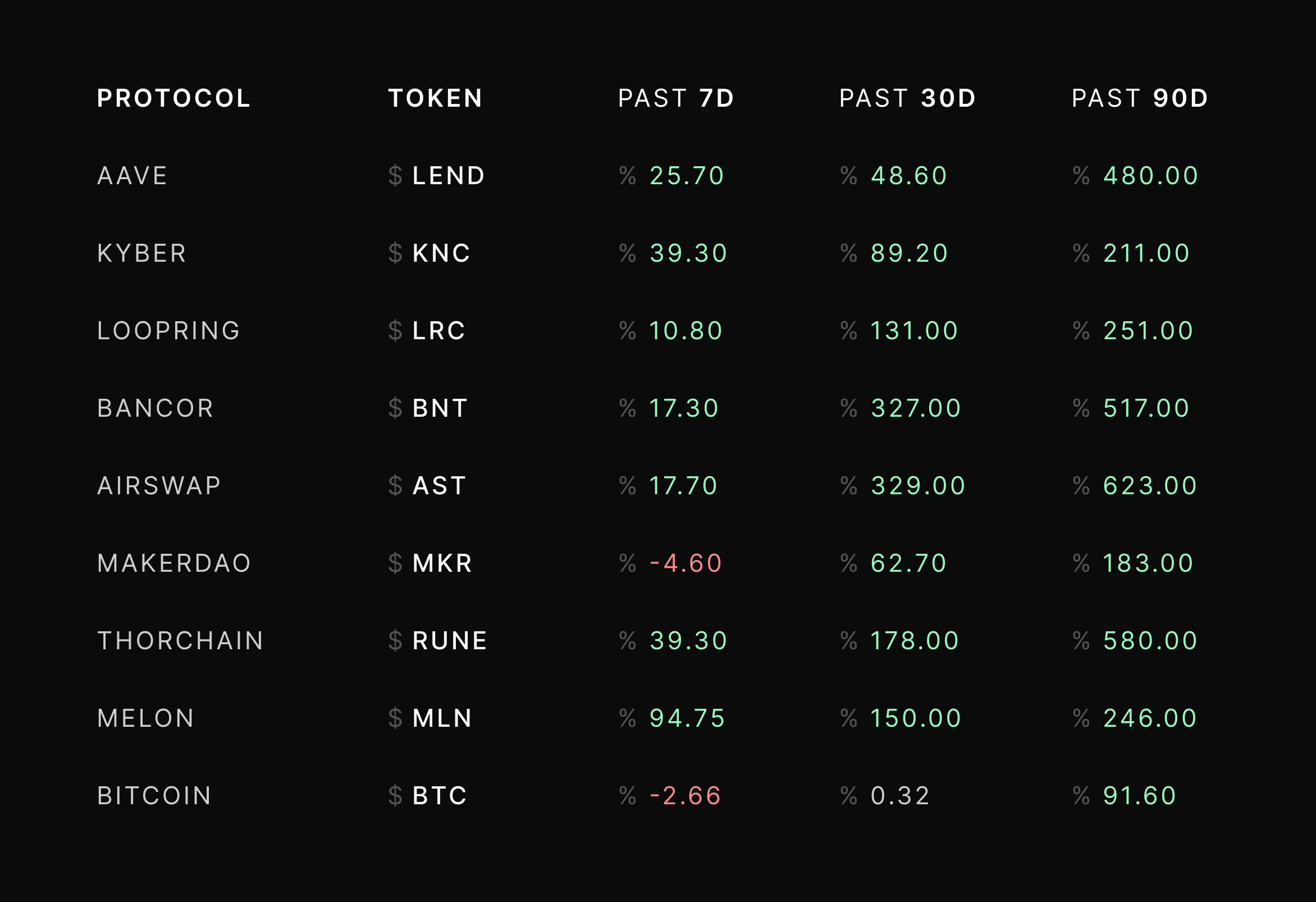
The trend of DeFi alpha is a welcome one — it represents the changing role that fundamentals play in crypto-asset valuation. The more that actual network growth and quantifiable data can be used to accurately determine prices, the more capital that can enter the ecosystem.
Market Roundup
An unwelcome correlation: Bitcoin and the broader crypto markets began trading tic for tic with the S&P 500 and other risk assets after volatility gripped traditional markets last Thursday. Bitcoin traded down from its brief stint above $10k and Ether has come back below $250 as discussions around ‘Phase 0’ have hinted towards a later date than most expected. Traders will recall the crypto market’s reaction to the varmageddon episode at the start of the COVID-19 crisis. It seems that in times of high volatility, crypto traders either get tepid or algorithmic traders swarm the market trying to take advantage of short term correlations.
(source: tradingview.com)
Over long enough time periods, cryptocurrencies have remained uncorrelated from traditional markets, which means these types of correlation trades usually break down at some point. When traders have to unwind their positions, they can both indiscriminate buyers and sellers, so expect volatility as the correlation fades away.
(source: coinmetrics.io)
The DeFi Index: Nearly every decentralized finance token has appreciated relative to Bitcoin over the last three months. It seems like the market is finally starting to take fundamentals into account and since DeFi protocols have seen the most traction, they are also seeing the largest inflows of capital. Many of these tokens are also revamping the mechanisms by which they capture value for holders. Most now integrate fees and protocol governance as core staples.
It will be interesting to watch how DeFi tokens perform once Bitcoin volatility comes back. In general, low bitcoin volatility gives other assets room to breathe as traders divert their attention away from Bitcoin. Strong performance in a more volatile Bitcoin resurgence would signal that the market views DeFi as a standalone sector that trades based on its own fundamentals, rather than just being a derivative of Bitcoin.
(source: skew.com)
From West to East: Cryptocurrency markets tend to oscillate between being west-dominated and east-dominated. When a region dominates, its disposition is the strongest driver of market performance. Since the crypto industry had its “Black Thursday” moment on March 12th, traders in the western region, namely the United States, have driven the market higher. Looking at the data, we can see a clear deviation in price of the BTC/USD pair vs the BTC/USDT pair. One way to interpret this is that the United States market was more in demand for Bitcoin, hence the premium. This also makes sense given the recent retail-led stock market rally. Increased fiscal stimulus led the western market to seek more risk, and that spilled over into the cryptocurrency markets.
(source: tradingview.com)
Identifying these regime changes is important for traders because it helps them focus their analysis on the more influential price driver. Similarly, market participants in each region have different preferences in terms of leverage and assets, changing the market structure each time there is a regime shift.
First Derivative
A look at dYdXs trading statistics
Trade Volume
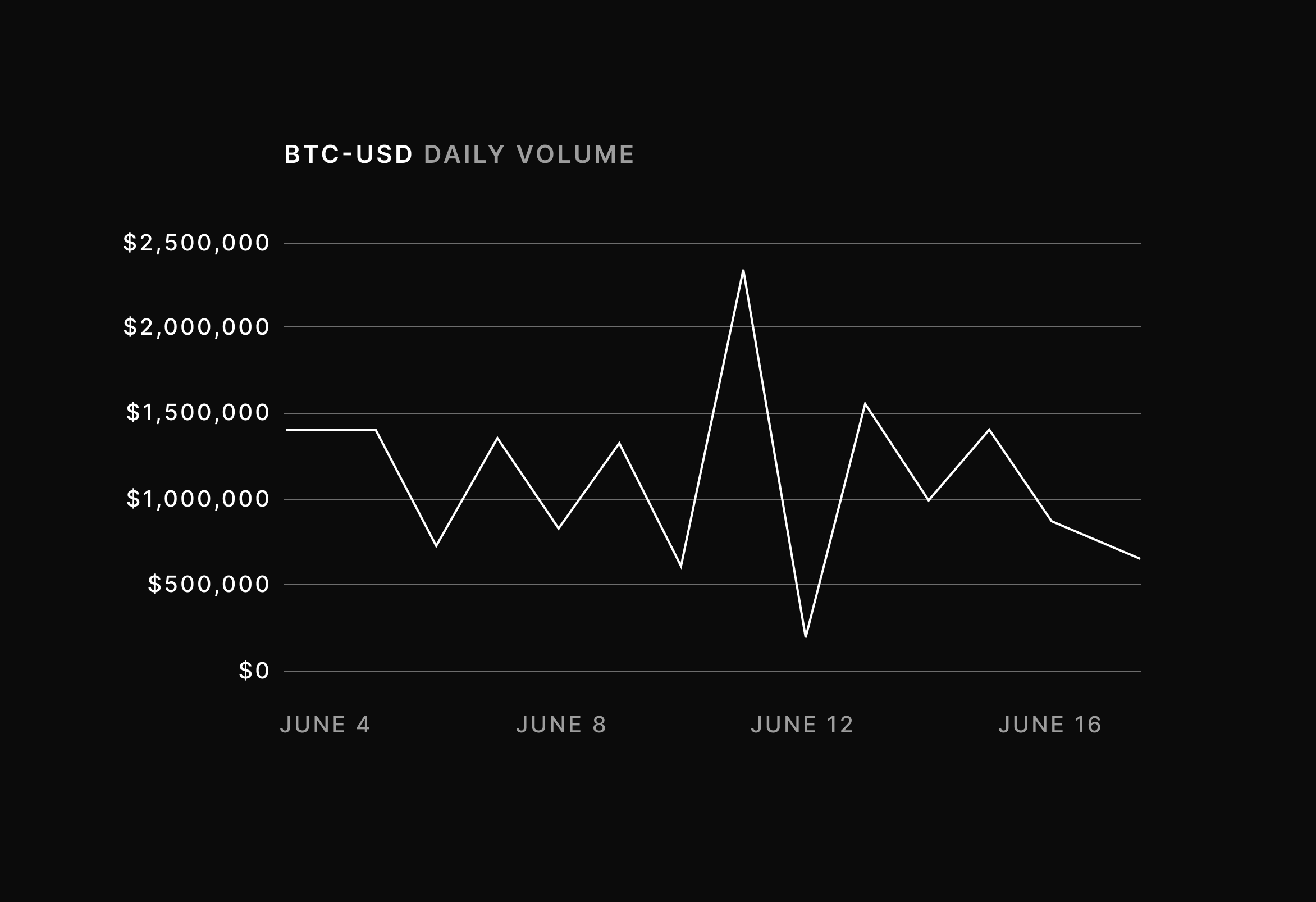
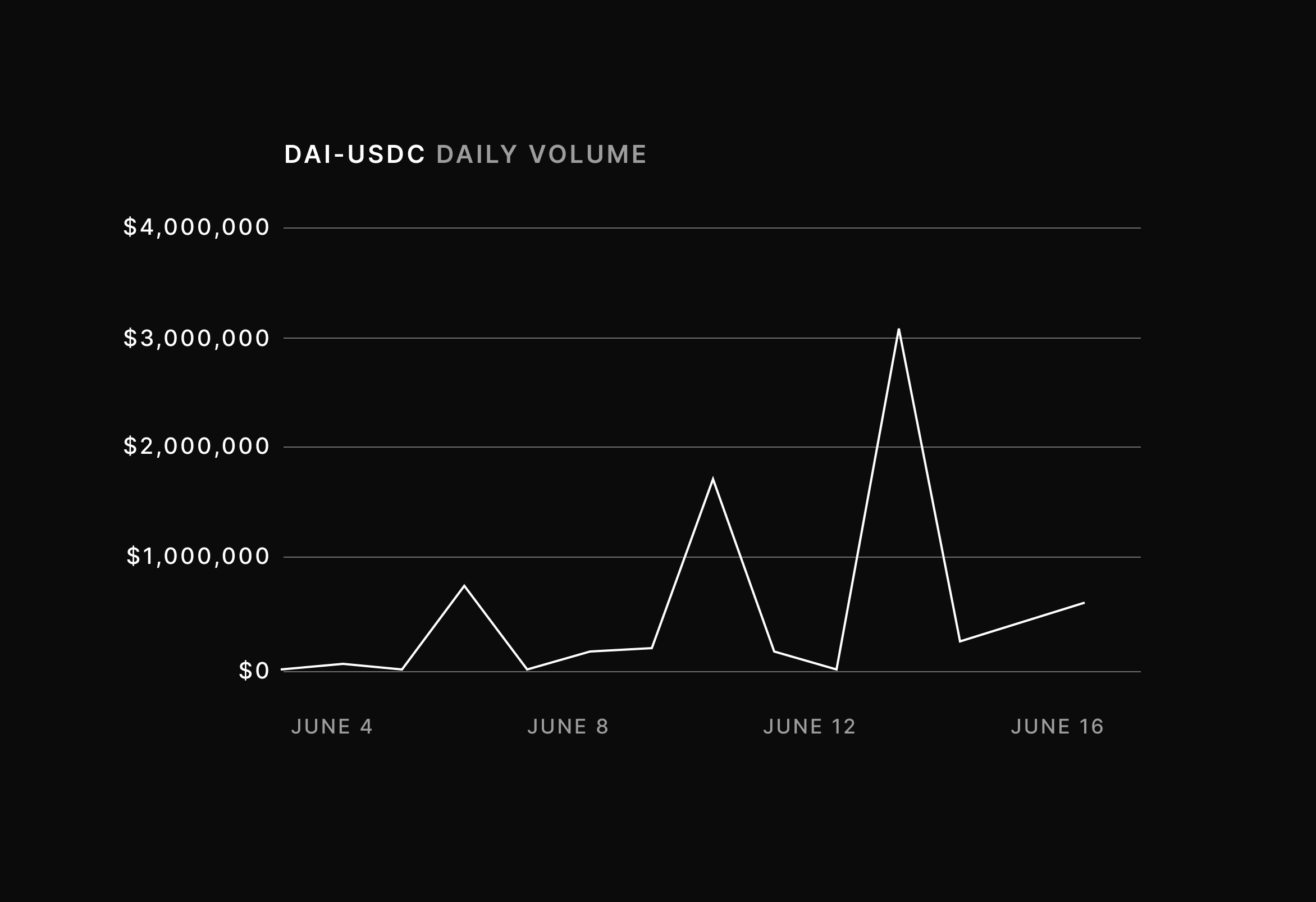

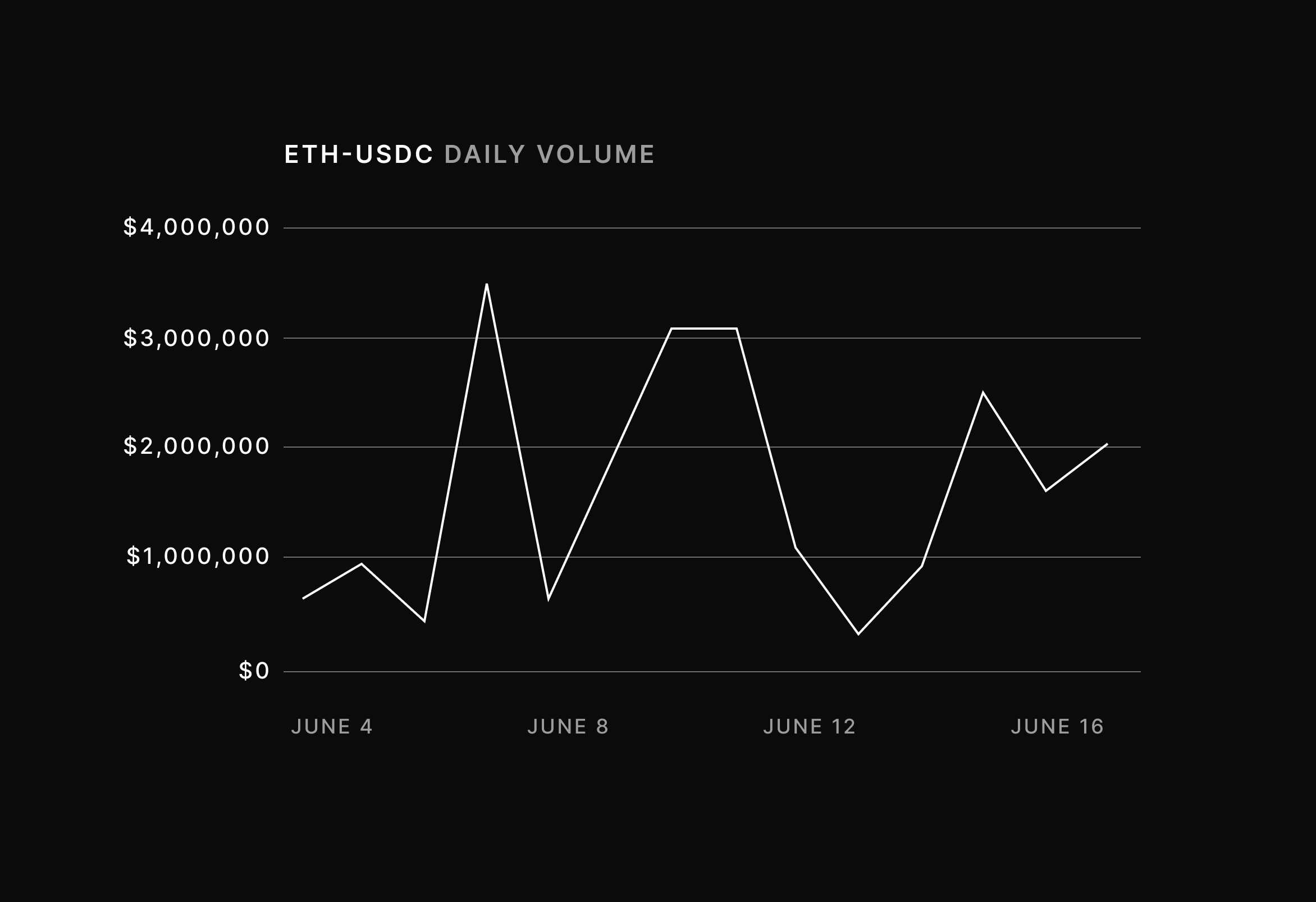
Buys vs. Sells
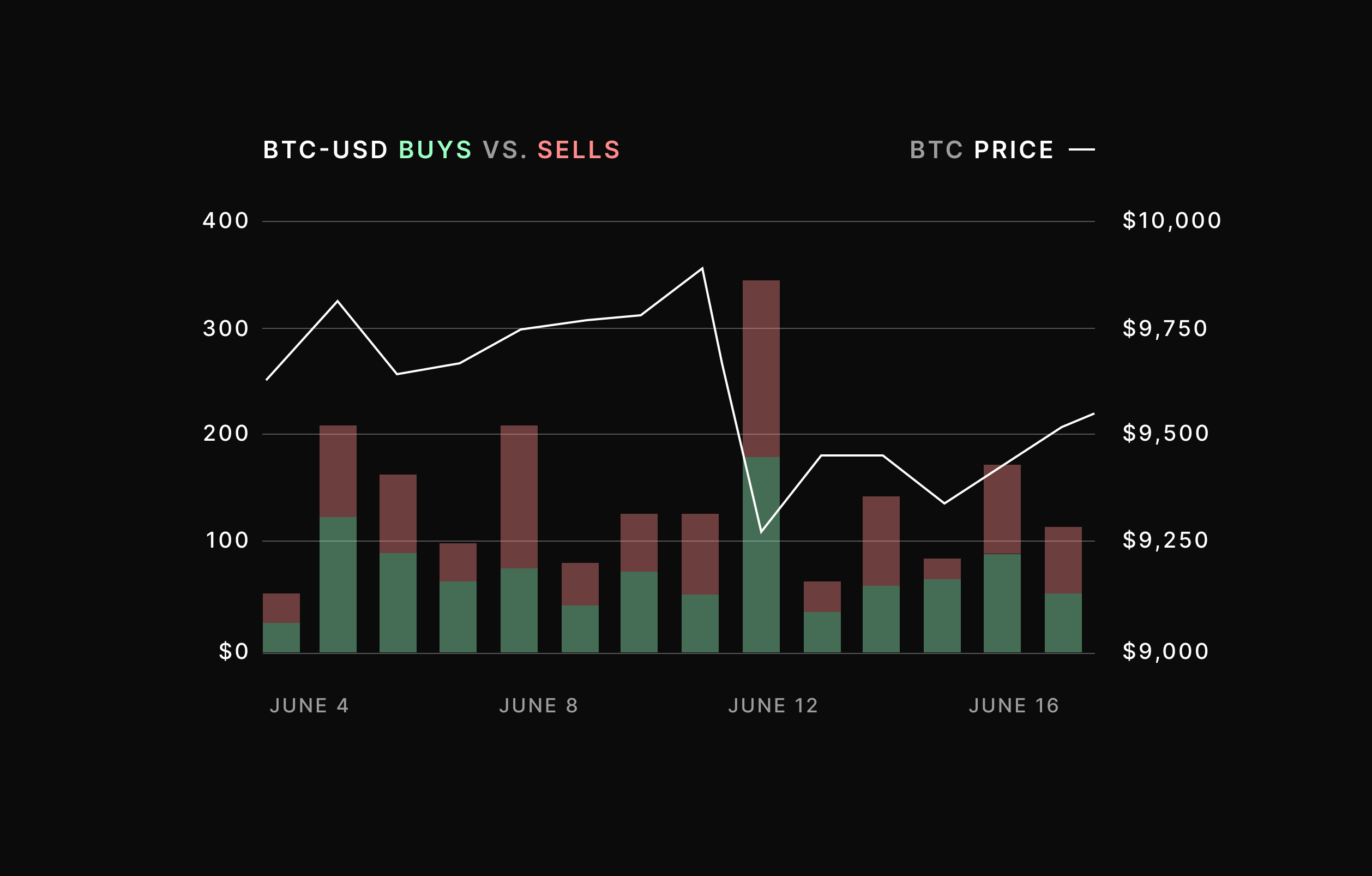
Perpetual Market Funding Rate
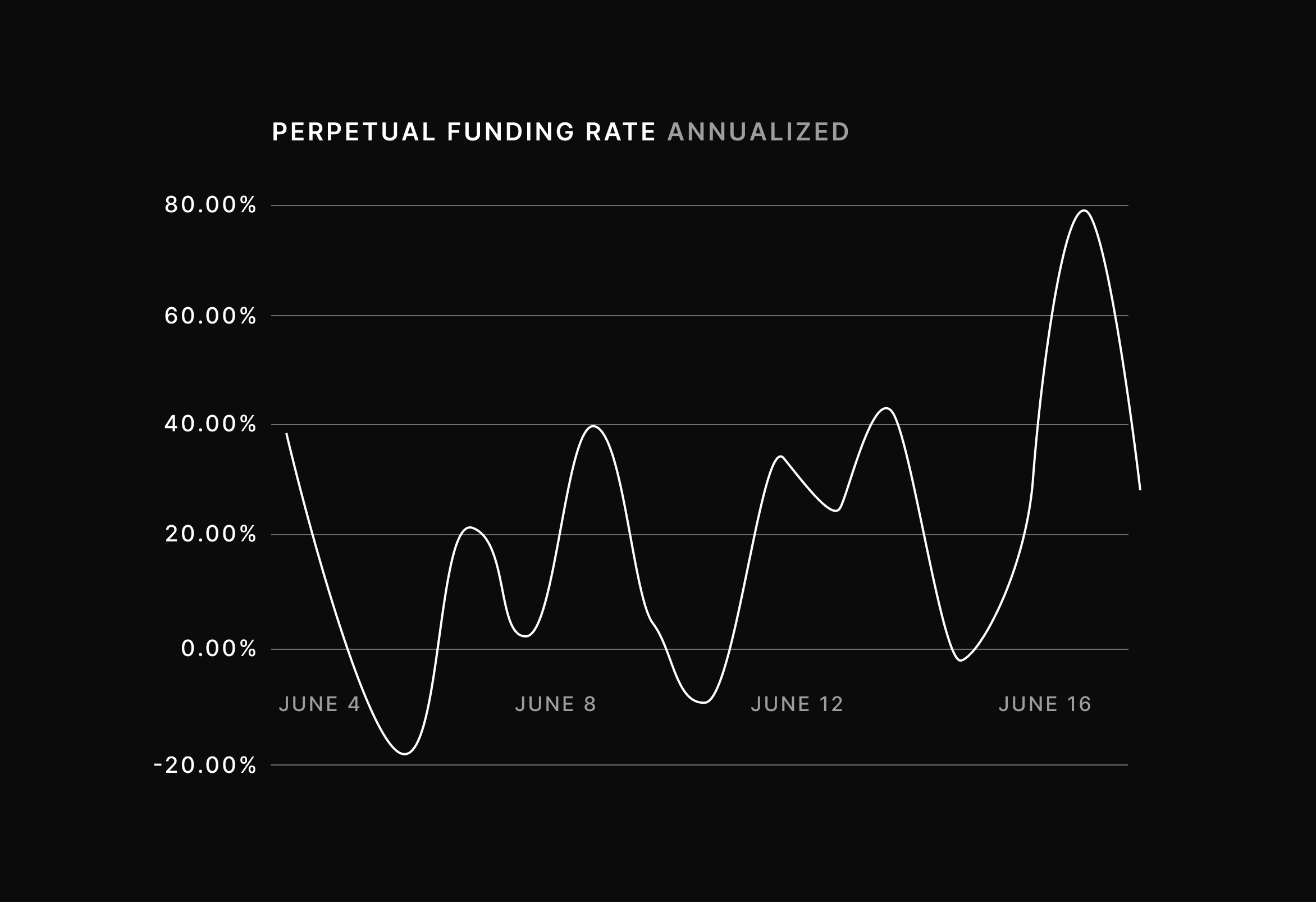
Borrow Rates
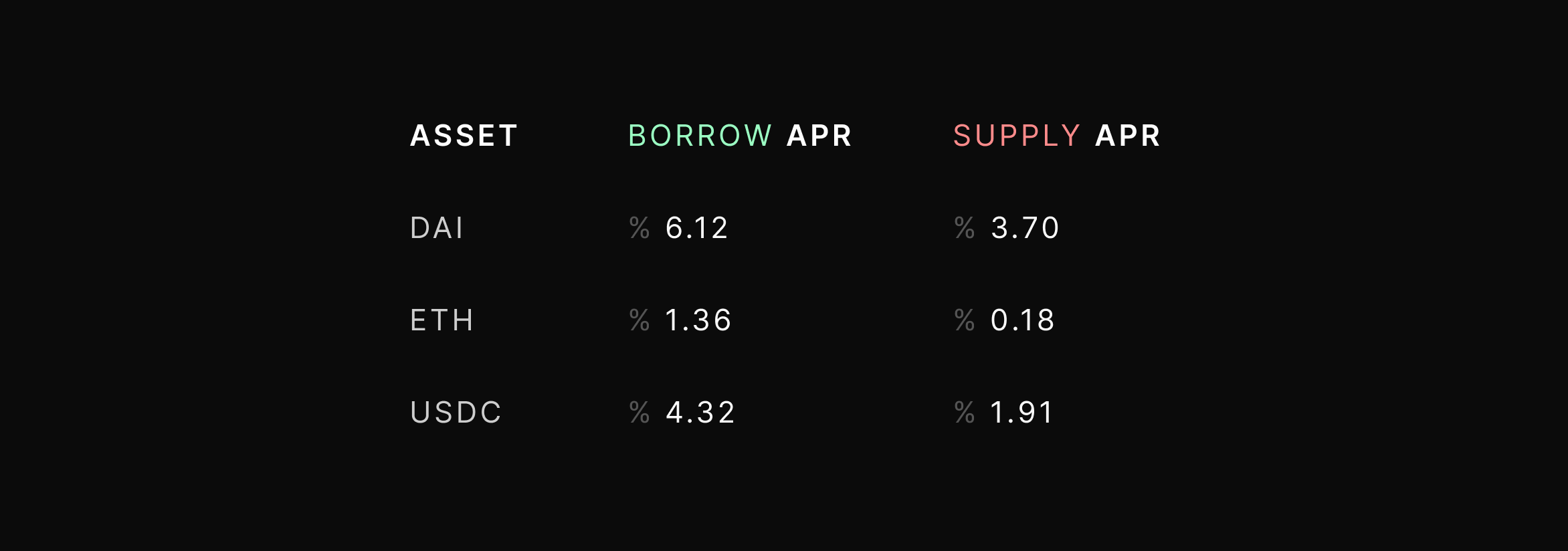
Second Derivative
Over the last two weeks, we’ve seen the most flow in our ETH <> USDC and ETH <> DAI books. We attribute this to general market bullishness on ETH as well as our position as one of the most liquid ways in DeFi to get exposure to ETH. Interestingly enough, USDC is catching up very quickly to Dai as the preferred onramp. We also found it interesting that we see a lot of stablecoin to stablecoin conversions during times of high volatility. We’re presuming that there’s a lot of price location between stablecoin pairs during times of volatility.
Cumulative funding on our BTC<>USD perpetual market paid shorts a total of 1.17% interest over the last two weeks, an annualized rate of 30.42% apr. There is still a lot of variance in the fund rate, but patient delta neutral traders have been able to farm a high rate of return. We continue to see long bias on our perpetual market despite the consistent positive funding. This is in stark contrast to most other perpetual markets that have been trending towards more negative funding, Binance and ByBit being the most skewed to that side.
We didn’t see any extreme moves in our lending markets. The average rate to borrow Dai over the last two weeks was 6.1% apr, ETH was 3.69%, and USDC was 4.3% apr. Given the market has been quite tepid recently, borrow rates have remained low. The supply side is a similar story, lenders earned an average of 3.69% APR on ETH, 1.81% APR for ETH, and 1.9% APR for USDC.
Around the Open Financial System
- We recently announced our support for USDT as a form of collateral for what is now our BTC <> USD perpetual market. Under the hood, we are working with Curve Finance to offer seamless stablecoin swaps so it doesn’t matter if a trader holds USDC or USDT. We’re expecting to see more flow from the asian market as traders can begin to use
Fidelity — The Institutions are Coming
- Fidelity just released their annual institutional investor survey in which they found that 80% of investors saw the appeal of digital assets and a third of investors had already made allocations to the asset class. In particular, investors have been drawn to the asset class because of unprecedented global monetary policy and given the fact that crypto assets have remained largely uncorrelated to traditional asset classes.
- Compound’s launch of their COMP governance token made a huge splash in the DeFi ecosystem as the token quickly traded up to $100 per token on thin Uniswap liquidity. Soon after launch, users began depositing Tether into the compound pool to farm COMP tokens, which increased usage across the broader ecosystem. More recently, COMP has traded up to $380 ahead of its Coinbase listnig. Apart from being a fascinating distribution strategy, the launch also showed how connected and composable the DeFi ecosystem already is.
BTC Yield on Curve Finance Powered by the RenVM
- Republic Protocol and Curve Finance recently announced an integration that will allow BTC holders to earn yield on-chain, effectively creating a non-custodial BTC bank account. The integration leverages the WBTC standard, but will also be a key piece of infrastructure in setting up a WBTC <> Ren BTC liquidity pool. Already, the Curve Finance pool is seeing strong traction and WBTC suppliers are earning over 8% APR.
- Jordan Momtazi of Synthetix discussed the lack of material effect SNX inflation rewards have had on the total value locked within the protocol. A majority of the SNX rewards were actually restaked within the protocol, which helps expand the collateral base against which new assets can be created.
- mStable recently launched their stablecoin conversion pools as well as a beta launch promotion fee. At 2.5 bps per stablecoin swap, mStable is currently the most affordable venue for DeFi users to switch between different stablecoins.
dYdX is the most powerful open trading platform for crypto assets with spot, margin, and perpetual markets.
Start trading on dYdX today and check out our new BTC-USDC Perpetual Market!
You can reach dYdX via email at contact@dydx.exchange, on Twitter, or on our official Discord.
